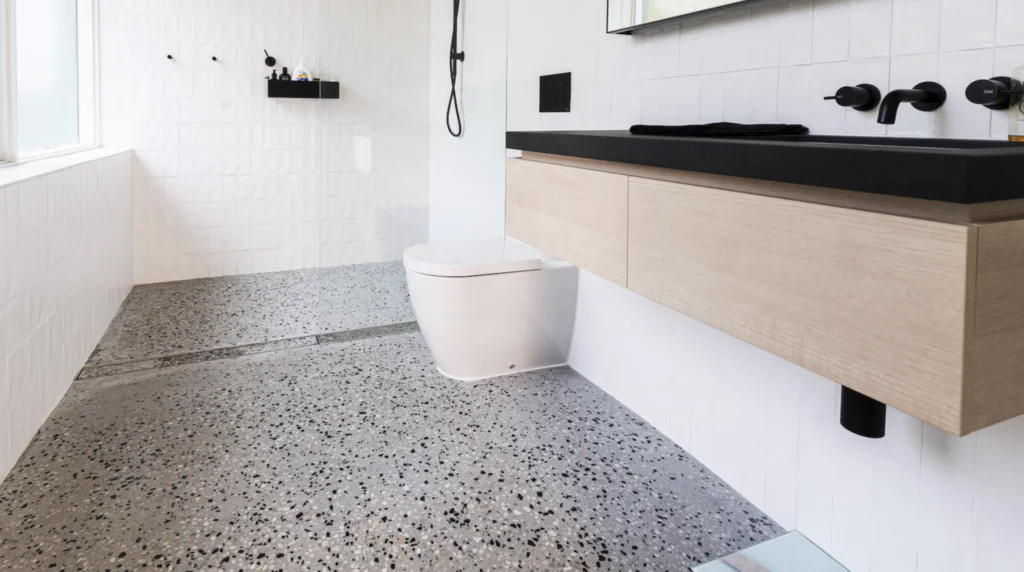Concrete flooring is becoming an increasingly popular option for modern bathrooms. Its durability, ease of maintenance, and versatility in style are some of the key reasons why homeowners and designers alike are drawn to this material. But is concrete bathroom flooring the right choice for you? Let’s dive into the pros and cons to help you decide.
Concrete bathroom flooring is not just for industrial spaces or outdoor patios anymore. More homeowners are opting for concrete as a bathroom flooring option due to its sleek, modern look and superior durability. But like any other material, it has its strengths and weaknesses. Whether you’re renovating or building a new bathroom, understanding the pros and cons of concrete flooring can help you make an informed decision.
What is Concrete Bathroom Flooring?
Definition and Description
Concrete bathroom flooring refers to the use of concrete slabs or overlays as a finished surface in the bathroom. While traditionally associated with cold, sterile environments, today’s concrete floors can be dyed, polished, or textured to fit various styles, from industrial chic to modern minimalism.
Common Uses in Home Design
Concrete floors are commonly found in modern and contemporary homes, especially those aiming for an industrial or minimalist aesthetic. Its ability to be customized with various colors and textures makes it suitable for a wide range of design schemes.
Pros of Concrete Bathroom Flooring
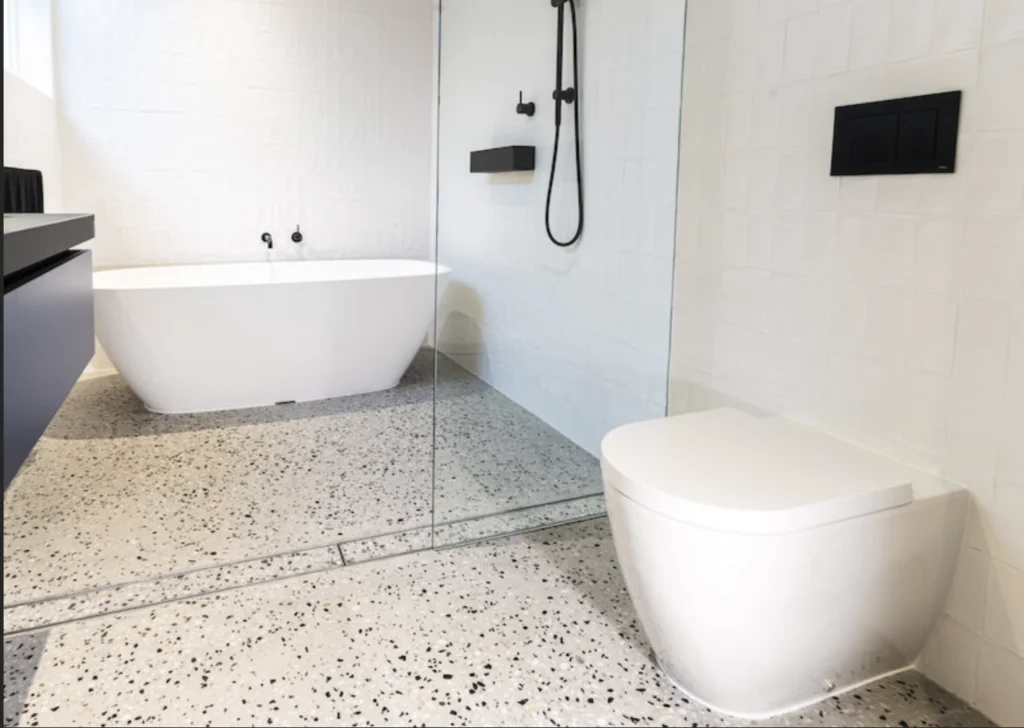
Durability
Concrete is one of the most durable materials available for flooring. It can withstand high foot traffic, resist impacts, and last for decades with minimal maintenance.
Water Resistance
Water resistance is a major benefit of concrete flooring. Unlike wood or laminate, it doesn’t warp or degrade when exposed to moisture. This makes it an excellent choice for bathrooms, where spills and splashes are common.
Easy Maintenance
Concrete is extremely easy to maintain. It requires periodic sealing, but beyond that, you can simply sweep, vacuum, or mop it. Its non-porous surface, when sealed, prevents water and stains from penetrating the floor.
Cost-Effectiveness
Concrete flooring is typically less expensive than high-end tiles or hardwood. Its longevity also means you’ll save on replacement costs down the line. For homeowners on a budget, concrete can be a cost-effective solution.
Aesthetic Versatility
Gone are the days when concrete floors were bland and gray. Today, you can stain, dye, or polish concrete to create a unique look. You can even stamp patterns into the surface to mimic tile or stone.
Cons of Concrete Bathroom Flooring
Cold Surface
One of the biggest drawbacks to concrete is its coldness. Without radiant heating, concrete floors can feel chilly underfoot, which isn’t ideal for bathrooms during the winter months.
Slippery When Wet
If concrete is polished to a high shine or sealed with certain treatments, it can become slippery when wet, posing a safety risk in bathrooms.
Hard Surface
Concrete is very hard, which can be unforgiving if someone falls. While this might not be a major issue in all areas of the home, it can be a concern in the bathroom.
Susceptibility to Cracks
Concrete is prone to developing cracks over time, especially if it’s not properly installed. These cracks can allow water to seep through, leading to potential moisture damage beneath the surface.
Cost of Installing Concrete Bathroom Flooring
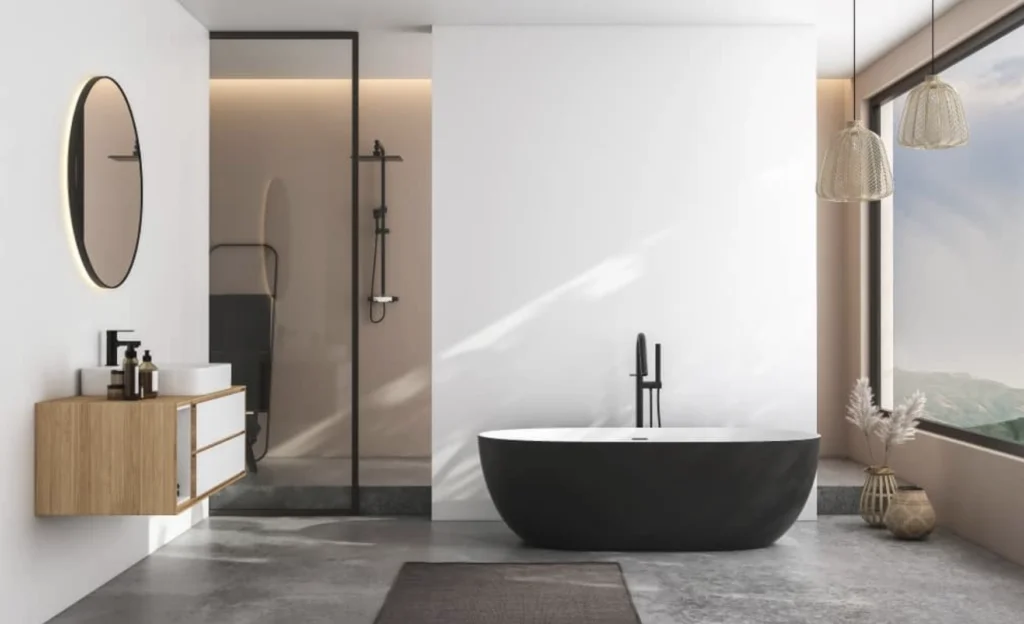
National Price Averages
The cost of concrete bathroom flooring varies based on the complexity of the design. A basic polished concrete floor can range from $3 to $8 per square foot, while more elaborate designs may cost between $5 and $15 per square foot.
Factors Affecting Cost
Costs increase if additional reinforcements like a cement board or underlayment are required. Labor, location, and the complexity of the finish also influence the final price.
Maintenance and Repair of Concrete Bathroom Flooring
Regular Maintenance Requirements
Concrete floors require minimal maintenance, but they should be sealed periodically to prevent stains. Regular sweeping and occasional mopping are all you need for daily upkeep.
Dealing with Cracks and Stains
If cracks appear, they need to be patched to prevent water from seeping through. Concrete is also susceptible to staining, so applying a sealer will protect against discoloration.
Design Options for Concrete Flooring
Staining and Dyeing
You can enhance the look of concrete flooring by staining or dyeing it. Acid staining creates a marbled effect, while dyes can introduce vibrant colors.
Textured Finishes
To add traction and reduce slipperiness, concrete can be textured during installation. This can also provide an appealing aesthetic for bathrooms.
Stenciled and Stamped Designs
Concrete can be stamped with patterns that mimic other materials like stone or tile, giving you a high-end look at a fraction of the cost.
Installation Considerations
Best Environments for Concrete Flooring
Concrete bathroom floors are ideal for homes with slab foundations or basements. For above-grade installations, additional structural support may be necessary due to the weight of the material.
Above-Grade vs. Slab Foundations
Concrete works best when laid directly over a slab foundation. For above-grade installations, extra reinforcements are usually required.
Comfort and Convenience of Concrete Flooring
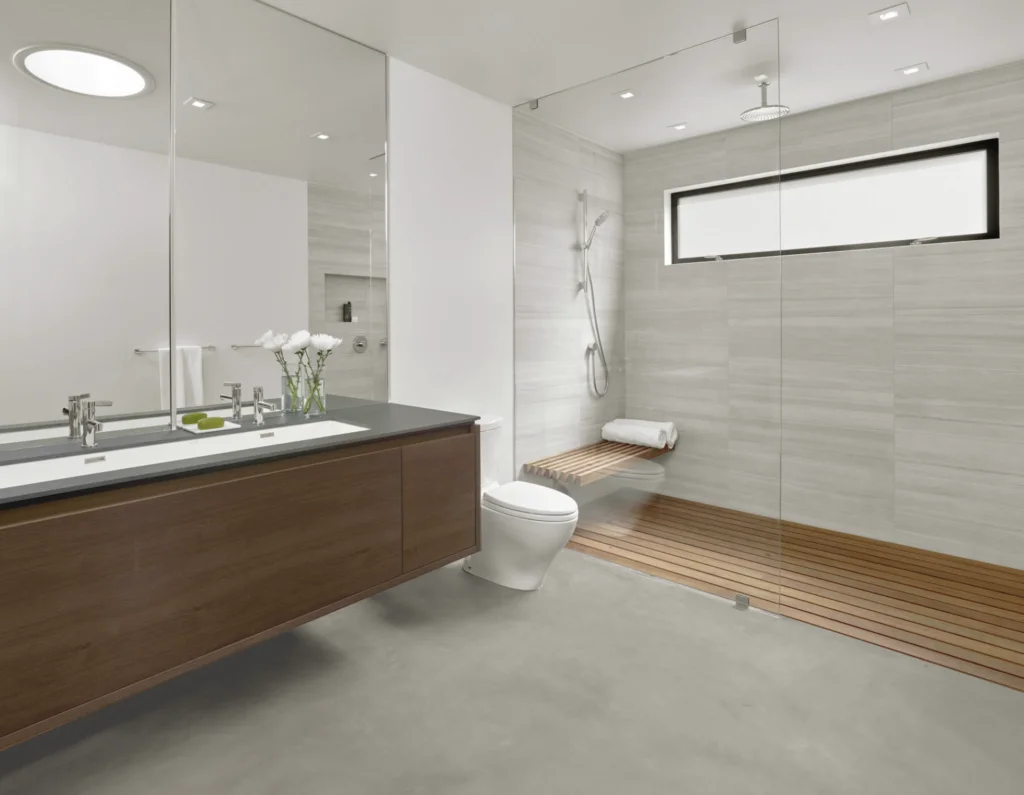
Low Temperature
Concrete floors tend to remain cold due to their proximity to the ground. While this can be refreshing in the summer, it can be uncomfortable during colder months.
Radiant Heating Solutions
To solve the issue of cold floors, radiant heating can be installed underneath the concrete. This not only warms the floor but also helps heat the entire bathroom.
Slipperiness of Concrete Floors
Finishing Treatments for Added Traction
To prevent the floor from becoming dangerously slippery, especially in a bathroom, consider applying a textured finish or choosing a sealer with added traction.
Stain Susceptibility
Protecting Concrete from Stains
Since concrete is naturally porous, it can stain easily if not sealed properly. A good-quality sealer will help protect the floor from water, chemicals, and other staining agents.
Concrete Flooring vs. Ceramic Tile
Aesthetic and Practical Comparisons
Ceramic tile offers more variety in design and color, but concrete wins in terms of durability. Tile can crack under impact, while concrete is far more resilient. However, ceramic tile is often more DIY-friendly, whereas concrete typically requires professional installation.
Is a Concrete Bathroom Floor Right for You?
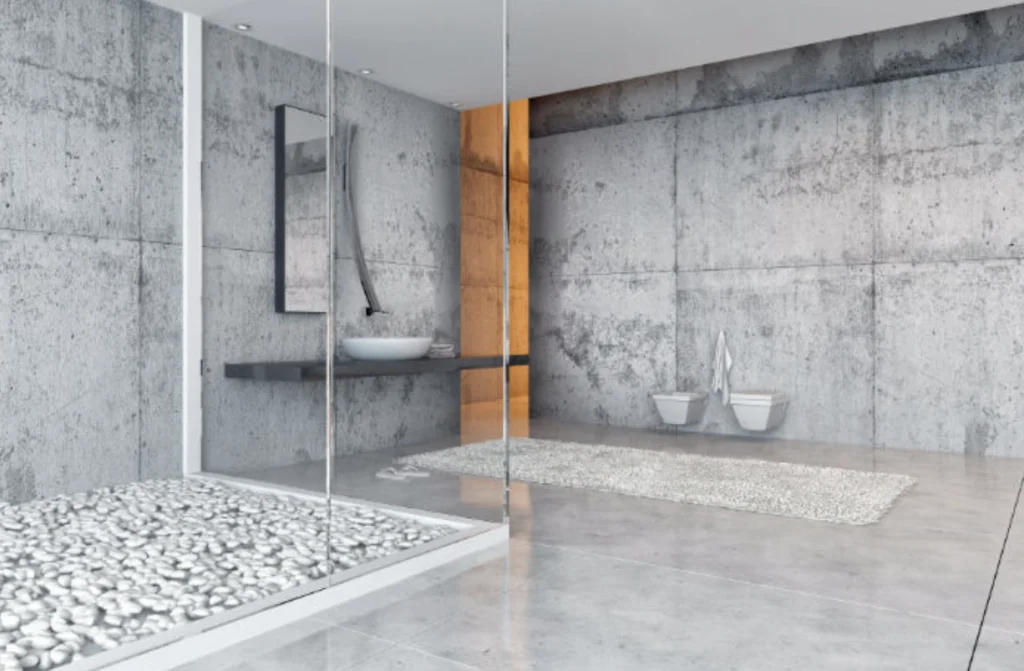
Concrete bathroom flooring has many advantages, but it also comes with its challenges. If you prioritize durability, water resistance, and a modern aesthetic, concrete could be a great choice. However, if cold floors and the risk of slipperiness are deal-breakers, you might want to consider other options like tile or vinyl.
Conclusion
Concrete bathroom flooring is a versatile and durable option that can add a sleek, modern look to your bathroom. However, it’s not without its downsides, including its cold, hard surface and susceptibility to cracks. By carefully weighing the pros and cons, you can decide if concrete is the best fit for your bathroom.
FAQs
1. Do concrete bathroom floors need to be waterproofed?
No, concrete itself is water-resistant, but cracks must be repaired to prevent water from seeping through.
2. Is concrete flooring cheaper than tile?
Yes, concrete is often more affordable and more durable, reducing the need for frequent replacements.
3. Can you install a toilet on a concrete floor?
Yes, as long as the plumbing is in place, a toilet can easily be installed on a concrete floor.
4. How long does concrete flooring last in a bathroom?
With proper care and maintenance, concrete flooring can last for decades, even the lifetime of the home.
5. Can concrete bathroom floors be heated?
Yes, radiant heating can be installed beneath concrete floors to make them warm and comfortable.

